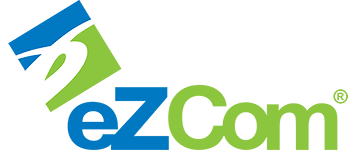What is an EDI 820?
The EDI 820, also known as the Payment Order/Remittance Advice, is an electronic document used to communicate details of payments made from a buyer to a seller. It provides comprehensive information about the payment, including the amount, payment method, and associated remittance details. This transaction set is essential for reconciling accounts and ensuring that both parties have accurate records of financial transactions.
Key Components of an EDI 820
An EDI 820 typically includes the following elements:
- Payment Amount: The total amount being paid, which may cover multiple invoices or transactions.
- Payment Method: Information on the payment method used, such as electronic funds transfer (EFT), wire transfer, or check.
- Remittance Details: A breakdown of the payment amount, including which invoices or transactions the payment applies to, any deductions or adjustments, and payment terms.
- Invoice Number: The specific invoice numbers associated with the payment, allowing for accurate reconciliation of accounts.
- Payer and Payee Information: Contact details and identification numbers for both the payer (buyer) and the payee (seller).
- Payment Date: The date on which the payment was made or is scheduled to be made.
- Adjustment Codes: Codes indicating any adjustments, such as discounts or deductions applied to the payment.
Benefits of Using EDI 820
Implementing EDI 820 transactions offers several advantages:
- Improved Cash Flow Management: Automates the exchange of payment information, reducing processing times and improving cash flow management.
- Accurate Reconciliation: Provides detailed remittance information that helps both parties accurately reconcile their accounts and identify any discrepancies.
- Reduced Administrative Burden: Minimizes the need for manual data entry and paper-based processes, reducing administrative overhead and the risk of errors.
- Enhanced Communication: Streamlines communication between buyers and sellers regarding payments, improving transparency and reducing the likelihood of disputes.
How the EDI 820 Works
The EDI 820 transaction set follows a structured process to facilitate seamless communication between trading partners:
- Payment Authorization: The buyer authorizes a payment based on outstanding invoices or due amounts.
- Creation of EDI 820: The buyer’s financial or EDI system generates the EDI 820 document, detailing the payment amount, method, and remittance information.
- Transmission: The EDI 820 is securely transmitted to the seller via an EDI network, ensuring data integrity and confidentiality.
- Reception and Processing: The seller’s EDI system receives and processes the EDI 820, updating their financial records and applying the payment to the relevant invoices.
- Acknowledgment: The seller may send an acknowledgment or response, such as an EDI 997 Functional Acknowledgment, confirming receipt and acceptance of the payment information.
- Reconciliation: Both parties update their financial records accordingly, ensuring accurate and timely reconciliation of accounts.
EDI 820 and Your Business
Implementing the EDI 820 transaction set can significantly enhance your business operations by automating the payment and remittance process. This is particularly important in industries with high transaction volumes, such as retail, manufacturing, and wholesale distribution. By automating the exchange of payment information, businesses can improve cash flow management, reduce errors, and foster better relationships with their trading partners.
At eZCom Software, we specialize in providing comprehensive EDI solutions tailored to your business needs. Our platform ensures seamless integration with your existing systems, enabling you to fully leverage the benefits of EDI 820 transactions without disrupting your current workflows.
FAQ: Understanding the EDI 820 Payment Order/Remittance Advice
What is an EDI 820 Payment Order/Remittance Advice?
The EDI 820 Payment Order/Remittance Advice is an electronic document used to communicate payment details and remittance information from a buyer to a seller, ensuring accurate financial transactions.
How does the EDI 820 improve cash flow management?
The EDI 820 improves cash flow management by automating the exchange of payment information, reducing processing times, and ensuring timely payments.
What information is typically included in an EDI 820?
An EDI 820 typically includes the payment amount, payment method, remittance details, invoice numbers, payer and payee information, payment date, and adjustment codes.
How does the EDI 820 benefit my business?
Implementing the EDI 820 can benefit your business by improving cash flow management, ensuring accurate reconciliation, reducing administrative burdens, and enhancing communication with trading partners.
What is the process for sending an EDI 820?
The process for sending an EDI 820 involves authorizing the payment, creating the EDI 820 document, securely transmitting it to the seller, receiving and processing the payment information, acknowledging receipt, and reconciling financial records.
How does the EDI 820 integrate with existing business systems?
At eZCom Software, we provide comprehensive EDI solutions that integrate seamlessly with your existing business systems, enabling smooth implementation and operation of EDI 820 transactions. This integration ensures that you can fully leverage the benefits of EDI without disrupting your current workflows.
By following this format, the article effectively communicates the importance of the EDI 820 in managing payments and provides valuable insights in
